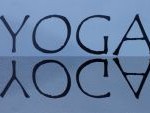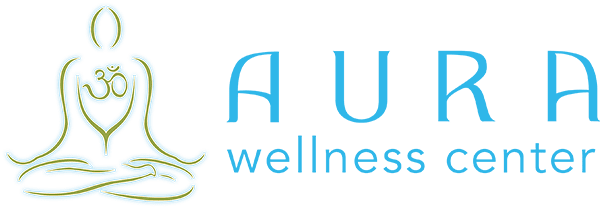 By Dr. Paul Jerard, E-RYT 500, YACEP
By Dr. Paul Jerard, E-RYT 500, YACEP
Within Yoga are many techniques which have taken off on their own. The entire field of Yogic relaxation is just one example. Sometimes, a generic name, such as Progressive relaxation, relaxation techniques, or stress management, is more acceptable than attaching the word “Yoga” to the front of the phrase.
Progressive Relaxation for All
The point is that Yoga and Yogic techniques may be welcomed depending on where you live, but what if you live in an area where the population considers Yoga a religious threat? If you are a Yoga teacher and live in an open-minded neighborhood, thank your lucky stars because you do not have to convince your community about the value of Yogic techniques.
Perhaps your Yoga teacher training did not prepare you to reason with people who resist logic. We live in a world where some people are easy to work with while others have a personal agenda that overrides the importance of anything else. If it were easy to reason with everyone, politics would be a “cakewalk.”
Overwhelming Stress
According to a 2010 survey by the American Psychological Association, people in the United States are not only worried about the economy but also about the effect it has on their family’s physical and mental health. They are aware of the dangers, but they have trouble finding time to make healthy lifestyle changes. Although some stress can improve performance and motivation, prolonged or excessive stress affects all body systems. It rewires the brain, making it more susceptible to depression and anxiety.
What is Progressive Relaxation?
One of the most effective and accessible ways to combat tension in the body is progressive muscle relaxation – a technique used to relax the body’s muscles, one group at a time. This approach is based on the assumption that stress physically affects the body, causing tight muscles and shallow breathing. Releasing the physical tension in the body also relaxes emotional tension and frees blocked energy.
Although seasoned Yoga teachers and practitioners are familiar with this technique, progressive relaxation is used in clinical and alternative treatments. It may be considered a part of physical therapy, Yoga, or meditation. Once learned, it can easily be used at almost any place and time to calm the neuromuscular system and stop the surge of cortisol into the body. However, the process is usually combined with other methods for outstanding results.
How Does it Work?
According to basic physiology, if allowed to rest afterward, a tightened muscle will return to an even more relaxed state when released. Progressive relaxation isolates and tightens one muscle group at a time for 8-10 seconds and then releases it. The process continues from the feet to the head until all the muscles in the body are relaxed. Since relaxed muscles require less oxygen, breathing deepens and slows down. The heart beats more slowly, blood pressure drops, and blood circulates throughout the organs and limbs. As the voluntary muscles calm down, moodiness subsides, and energy increases.
What are the Steps in Muscle relaxation?
1. Be aware of the tension in the body.
2. Single out a muscle group and tighten.
3. Release.
4. Progress through the body from the toes to the scalp.
5. Notice how it feels to relax.
With practice, muscles learn to relax more quickly, and psychological responses occur more easily. Guided relaxations, meditations, and scripts may ease the process, or progressive relaxation may be used to increase the effectiveness of other Yoga, meditation, or exercise.
More About Yoga and Progressive Relaxation Techniques
These practices have been used for centuries to promote physical, mental, and emotional well-being. Let’s explore the purpose of yogic progressive relaxation techniques, the different types of these techniques, and their benefits for vibrant health and overall life quality.
The Purpose of Yogic Progressive Relaxation Techniques
Yogic progressive relaxation techniques are designed to promote deep physical and mental relaxation. The practice involves consciously tensing and relaxing different muscle groups, allowing you to release built-up tension and stress.
The purpose of these techniques is twofold: first, they help you become more aware of your body and the sensations it is experiencing. This heightened awareness can lead to greater mindfulness in other areas of your life, helping you stay present in the moment.
Yogic progressive relaxation techniques activate what is known as the “relaxation response” in your body. This response counteracts the physiological effects of stress by lowering blood pressure, heart rate, and cortisol levels (the stress hormone) in the body.
By practicing these techniques regularly, you can not only reduce feelings of anxiety and stress but also improve overall physical health. So next time you’re feeling overwhelmed or tense, take a few minutes to try out some yogic progressive relaxation.
Different Types of Progressive Relaxation Techniques
There are various types of progressive relaxation techniques that one can try out. The most common type is Jacobson’s Progressive Muscle Relaxation method. This technique involves tensing and relaxing different muscle groups, from the toes to the head.
Another type of progressive relaxation technique is Autogenic Training. In this technique, you repeat phrases or words, such as “My arms are heavy and warm,” which helps your body relax deeply.
Body Scan Meditation is also a popular form of progressive relaxation technique in yoga. It involves focusing on each part of your body sequentially and checking for any sensations or tension present.
Visualization techniques are another way to practice progressive relaxation. By using imagery and imagination, you can create a peaceful environment in your mind that can help reduce stress levels.
Breathing exercises such as Pranayama can be incorporated with these techniques too. Focusing on breath calms down both our body and mind making us relaxed.
Trying out different progressive relaxation techniques will allow us to find what works best depending on what we want: reducing stress levels, restoring emotional balance, or improving overall well-being.
The Benefits of Yoga and Progressive Relaxation Techniques
Yoga and Progressive Relaxation Techniques offer many benefits for the mind, body, and soul. Practicing these techniques regularly can help reduce stress, improve sleep quality, boost concentration, and increase flexibility and strength while promoting emotional well-being.
One of the significant benefits of Yoga is that it helps to reduce stress and anxiety. Combining deep breathing exercises with physical movements helps calm your mind and relax your muscles. Moreover, practicing yoga regularly can lead to an improvement in overall mood regulation.
In addition to Yoga’s benefits, Progressive Relaxation Techniques are another powerful tool that aids relaxation by systematically tensing and relaxing different muscle groups throughout the body. This technique promotes deep relaxation, which can alleviate symptoms related to high blood pressure and improve digestion and immune function.
Moreover, combining both techniques enhances their benefits exponentially, promoting even more profound healing effects on the physical body and fostering emotional resilience. Together they cultivate a sense of balance within oneself, creating harmony between our inner world and external circumstances.
Yoga combined with Progressive Relaxation Techniques presents an excellent opportunity for individuals looking to take charge of their mental health while cultivating self-awareness.
Progressive Relaxation Techniques for Emotional Health
Progressive relaxation techniques can be a powerful tool for improving emotional health. Our bodies respond with tension and tightness when we experience stress or negative emotions. Progressive relaxation allows us to release that tension and create a sense of calm in the body.
One effective technique is known as body scanning. This involves focusing on different body parts, starting at the toes and working up to the head. As you focus on each area, briefly tense the muscles before releasing them.
Another technique is deep breathing combined with visualization. Close your eyes and imagine yourself in a peaceful setting like a beach or forest. Breathe deeply while imagining yourself surrounded by this calming environment.
A third option is guided imagery meditation, where an instructor guides you through visualizations designed to promote feelings of calmness and positivity.
By practicing these techniques regularly, you can help manage symptoms of anxiety and depression while promoting overall emotional well-being. Remember, your mental health is as important as your physical health.
Yoga and Progressive Relaxation Techniques for Life Quality
Yoga and progressive relaxation techniques can significantly enhance your life quality. By practicing these methods, you can learn to control your stress levels, reduce anxiety, improve sleep quality, and increase overall well-being.
One of the main benefits of yoga is its ability to help us become more mindful and present in the moment. This mindfulness practice helps us better understand our thoughts and emotions to respond more effectively to life’s challenges. Additionally, yoga poses help release tension from different areas in our body, resulting in increased flexibility.
Progressive relaxation techniques reduce muscle tension by gradually tensing and releasing muscles throughout the body. This method is particularly beneficial for people who suffer from chronic pain or those experiencing physical discomfort due to poor posture or an injury.
By incorporating both these practices into your daily routine, you may notice that you have improved energy levels during the day and can relax easily when it’s time for bed at night. Overall, Yoga combined with Progressive Relaxation Techniques provides a holistic approach to enhancing one’s lifestyle.
Conclusion
The practice of yoga and progressive relaxation techniques can have a profound impact on our physical, mental, and emotional well-being. Incorporating these practices into our daily routine can reduce stress levels, improve sleep quality, boost immune function, and enhance overall life quality.
Whether you want to manage stress or enhance your overall well-being, practicing yoga and progressive relaxation techniques may be an excellent place to start.
© Copyright – Aura Wellness Center – Publications Division
Do you want to become a mindfulness meditation teacher?
See our selection of Yoga instructor courses and continuing education courses; please visit the following link.
https://aurawellnesscenter.com/store/
Click here to see our online Yoga Nidra teacher training course.
Are you an experienced teacher looking for YACEP credits or continuing education?
Subscribe to Our Newsletter for Special Discounts and New Products
Are you considering how to become a yoga instructor? See our selection of affordable meditation and yoga teacher certification courses.
Related Resources
52 Essential Principles of Yoga Philosophy to Deepen your Practice
by Rina Jakubowicz
A Relaxing Way to De-stress, Re-energize, and Find Balance
by: Gail Boorstein Grossman
YOGA: THE PATH TO HOLISTIC HEALTH
by B.K.S. Iyengar
TEACHING YOGA: Essential Foundations and Techniques
By Mark Stephens
S. Henderson
The national survey of mental health and well-being in Australia: impact on policy
Can J Psychiatry
(2002)
R. Hyman et al.
The effects of relaxation training on clinical symptoms: a meta analysis
Nurs Res
(1989)
K. Luebbert et al.
The effectiveness of relaxation training in reducing treatment related symptoms and improving emotional adjustment in acute non-surgical cancer treatment
Psych-oncology
(2001)
See our testimonials to learn what our graduates say about our online Yoga instructor certification course selection. Of course, you may also want to go green with intensive courses.
See yoga videos, demonstrations, and lectures for 200-hour yoga teacher training intensives and specialized continuing education courses.

The PMR technique is similar to “AVAYAV DHYAAN,” rotating consciousness through different body parts’ in the practice of YOGNIDRA.
Progressive relaxation may be used to increase the effectiveness of other kinds of Yoga, meditation, or exercise. Thanks for sharing this valuable article.